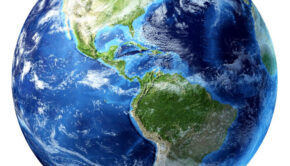Jules Verne: Uncertainty in Indian Ocean
Published on December 7th, 2020
(December 7; Day 13) – After 12 days 2 hours and 5 minutes at sea, Sodebo Ultim 3 crossed the longitude of the Cape of Good Hope today at 5:00 am. (French time). This is the first of the three legendary capes to be crossed in this Jules Verne Trophy attempt.
Since leaving Ouessant on November 25 at 2:55 am, Thomas Coville and his seven crew have covered 8,154 miles, at an average of 28 knots. When passing the Cape of Good Hope, they had a 17 hour and 35 minute lead over the holder of the Jules Verne Trophy (626.73 nm advance as of 21:45 FR).
As for the course in the southern latitudes, meteo support Jean-Luc Nélias explains how it’s going to be more complicated than for the record holder which had been straight to New Zealand. “We are going to have more tailwind and when we arrive towards Cape Leeuwin, there is a complex weather situation with either light or very bad weather, but it can also go very well.
“We will probably lose the lead we have accumulated so far, though it would be nice to be tied with Idec Sport under New Zealand which would make it possible to attack the Pacific with a chance of seizing the record.
“Until then, we will have to negotiate at best an Indian Ocean where a few icebergs and growlers have been spotted (pieces of ice that break off) that the crew and the routing cell are carefully monitoring, with the support of CLS, a specialized company to help with detection.
“Unlike the Vendée Globe, where an ice limit is imposed on all competitors, nothing constrains us, except the safety of the boat and especially the crew,” explains Nélias. “We have to take a little risk because the shortest route goes closer to the ice. As the smallest object detectable by satellite images measures 20 meters, we are also relying on statistics and our expertise.”
Crew list: Thomas Coville, François Duguet, Sam Goodchild, Corentin Horeau, Martin Keruzoré, François Morvan, Thomas Rouxel and Matthieu Vandame.
After starting at 02h 55min (French time) on November 25, to grab the Jules Verne Trophy (40:23:30:30), the 32-metre Sodebo Ultim 3 must cross the finish line in Ouessant before January 5 at 2h25min (French time, subject to World Sailing Speed Record Council).
The rules for the Jules Verne Trophy are simple – it is for the fastest time around the world by any type of yacht with no restrictions on the size of the crew, starting and finishing from the exact line between the Le Créac’h Lighthouse off the tip of Brittany and the Lizard Point in Cornwall. It was first won in 1993, with all nine winners as either catamarans or trimarans. The current challenge is to beat the record time of 40 days 23 hours 30 minutes and 30 seconds set by Francis Joyon and crew on the 31.5m IDEC Sport in 2017.
Record Facts
• Start and finish: a line between Créac’h lighthouse (Isle of Ushant) and Lizard Point (England)
• Course: non-stop around-the-world tour racing without outside assistance via the three Capes (Good Hope, Leeuwin and Horn)
• Minimum distance: 21,600 nautical miles (40,000 kilometres)
• Ratification: World Sailing Speed Record Council, www.sailspeedrecords.com
• Time to beat: 40 days, 23 hours, 30 minutes and 30 seconds
• Average speed: 21.96 knots
• Date of current record: January 2017
• Holder: IDEC SPORT, Francis Joyon and a 5-man crew
Split Time References – Full Crew:
Ushant-Equator: 4d 20h 07 ‘(Spindrift 2 in 2019)
Equator-Cape Aiguilles: 6d 08h 55 ‘(Banque Populaire V in 2012)
Cape Aiguilles-Cape Leeuwin: 4d 09h 32 ‘(IDEC Sport in 2017)
Cape Leuuwin-Cape Horn: 9d 08h 46 ‘(IDEC Sport in 2017)
Cape Horn-Equator: 7d 04h 27 ‘(Banque Populaire V in 2012)
Equator-Ushant: 5d 19h 21 ‘(IDEC Sport in 2017)
Here are the nine that have held the trophy:
2017 – Francis Joyon / IDEC SPORT (31.5m) – 40:23:30:30
2012 – Loïck Peyron / Banque Populaire V (40m) – 45:13:42:53
2010 – Franck Cammas / Groupama 3 (31.5m) – 48:07:44:52
2005 – Bruno Peyron / Orange II (36.8m) – 50:16:20:04
2004 – Olivier De Kersauson / Geronimo (33.8m) – 63:13:59:46
2002 – Bruno Peyron / Orange (32.8m) – 64:08:37:24
1997 – Olivier De Kersauson / Sport-Elec (27.3m) – 71:14:22:08
1994 – Peter Blake, Robin Knox-Johnston / Enza New Zealand (28m) – 74:22:17:22
1993 – Bruno Peyron / Commodore Explorer (28m) – 79:06:15:56
Source: Sodebo Ultim 3









 We’ll keep your information safe.
We’ll keep your information safe.